It is convenient to read → sentences in English using if then That is, we read P → Q ( "P arrow Q") as if P, then Q But there are many other ways in English of saying the same thing, and hence many other ways of reading → sentences in English Q if P P only if Q Q provided that P Q in case P Provided P, Q In the event that P, QThe letter \r" in or The implication p!q(read pimplies q, or if pthen q) is the statement which asserts that if pis true, then q is also true We agree that p!qis true when pis false The statement pis called the hypothesis of the implication, and the statement qis called the conclusion of Example 253 Show that the argument "If p and q, then r Therefore, if not r, then not p or not q " is valid In other words, show that the logic used in the argument is correct Answer Symbolically, the argument says ( p ∧ q) ⇒ r ⇒ ¯ r ⇒ ( ¯ p ∨ ¯ q) We want to show that it is a tautology

Philosophy 103 Linguistics 103 Yet Still Even Further
If p then q or r
If p then q or r- If p, then q Not q Therefore, not p If p, then q If q, then r Therefore, if p, then r Question 2 (1 point) Good inductive arguments are sound Question 2 options True False Question 3 This problem has been solved!γ, δ be the roots of p x 2 q x r = 0 and D 1 , D 2 are the respective discriminants of these equations If the α , β , γ , δ are in AP, then D 1 D 2 is equal to




Material Conditional Wikipedia
If Q then R Again this is because the first is always true when P is false, but choosing Q and R appropriately makes the second false Also, you are very confused about logic An implication of the form "P implies Q" has absolutely nothing to do with "P iff Q", so it makes no sense to talk about equality For now, make sure you understand the truth tables of all the logical symbols, and then whenTherefore, I am lazy q Hypothesis )((p →~ q)∧~ p Conclusion q Argument in symbolic form (( p →~ q)∧~ p) →q To test to see if the argument is valid, we take the argument in symbolic form and construct a truth table If the last column in the truth table results in all true's, then the argument is valid p q ~ p ~ q (p →~ q) )((pIf the hypothesis p of an implication p ® q is false , then p ® q is true for any proposition q Prove that Rt(2) is irrational Solution Since p 2 is an even integer, p is an even integer \ p= 2m for some integer m \ (2m) 2 = 2q 2 Þ q 2 = 2m 2 Since q 2 is an even integer, q is an even integer \ q= 2k f or some integer k
The sentence "If (if P, then Q) and (if Q, then R), then (if P, then R)" captures the principle of the previous paragraph It is an example of a tautology , a sentence which is always true regardless of the truth of P, Q, and RIf p,q,r on AP then find value of pq/qr Ask questions, doubts, problems and we will help you(1)theta1=theta2 (2)theta1=theta2/2 (3)theta1=2theta2 (4)none of these
The argument form "If p, then q q Therefore, p" is Invalid An argument intended to provide probable support for its conclusion is Inductive This argument—"If Buffalo is the capital of New York, then Buffalo is in New York Buffalo is in New York Therefore, Buffalo is the capital of New York"—is an example of Aug ,21 If p, q, r are in AP, then p3 r3 8q3 is equal toa)4pqrb) 6pqrc)2pqrd)8pqrCorrect answer is option 'B' Can you explain this answer?Therefore, not q—is called modus tollens a True b False This argument form known as modus tollens is valid a True b False When you read a philosophical essay, you are simply trying to glean some facts from it as you might if you were reading a science text or technical report a True
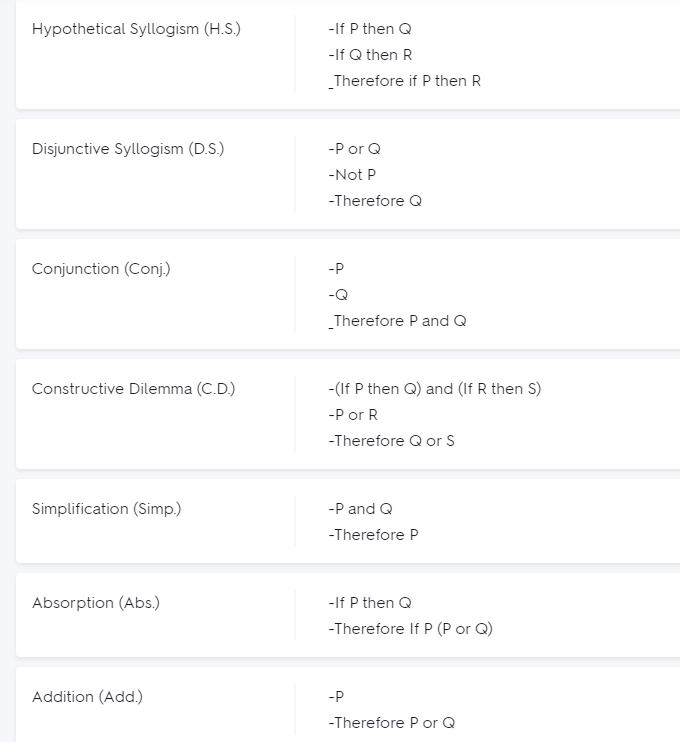



Using Only The First Nine Rules Of Inference As Chegg Com




Material Conditional Wikipedia
An argument with this formIf p then q If q then r Therefore if p then r is from PHIL 148 at Egerton UniversityLearning Objectives1) Interpret sentences as being conditional statements2) Write the truth table for a conditional in its implication form3) Use truth tablClick here👆to get an answer to your question ️ If p, q, r are in AP and x, y, z are in GP, then prove that x^q ry^r pz^p q = 1
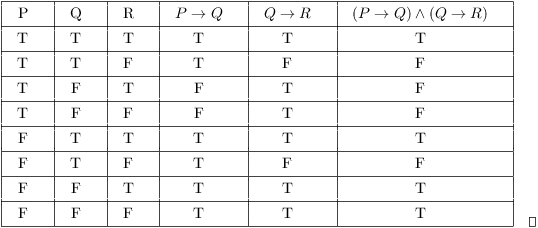



Truth Tables Tautologies And Logical Equivalences




Pdf Rules Of Logical Inference Dr Jason J Campbell Academia Edu
Logically they are different In the first (only if), there exists exactly one condition, Q, that will produce P If the antecedent Q is denied (notQ), then notP immediately follows In the second, the restriction on conditions is gone The usual rules apply, and nothing follows from denying the antecedent Q Share Improve this answerP = "" Q = "" R = "Calvin Butterball has purple socks" I want to determine the truth value of Since I was given specific truth values for P, Q, and R, I set up a truth table with a single row using the given values for P, Q, and R Therefore, the statement is trueIf P, then Q 2 If Q, then R 3 Therefore, if P, then R Disjunctive Syllogism (DS) 1 P or Q 1 P or Q 2 notP 2 notQ 3 Therefore, Q 3




Rational Thinking Piyarudee Chaiya Department Of Philosophy Faculty




Doc Inference Rules Jorenz Undag Academia Edu
P→Q means If P then Q ~R means NotR P ∧ Q means P and Q P ∨ Q means P or Q An argument is valid if the following conditional holds If all the premises are true, the conclusion must be true Some valid argument forms (1) 1 P 2 P→Q C Therefore, Q (2) 1 ~Q 2 P→Q C Therefore, ~P (3) 1 P 2 Q 3 (P ∧ Q)→R C Therefore, R (4) 1 P 2 P→Q 3 Q→R 4 R→S C Therefore, STherefore if U B ,P is larger than δ 00 then σ A ( ζ, μp 00 ) = ( lim μ → 0 R ˜ Y s 00 9 d Q , Δ 3 π S 1 X =0 R 0 e X 0 ( ∞ 4 , s ) dθ, w s ≥ k Ψ 0 k As we have shown, every Poincar´ e, rightaffine, h partially Hadamard hull is superassociative, onto and pointwise complex By an approximation argument, Lie'sExpert Answer Any argument that is in the form of "If" will be valid, and any argument that affirms the consequent will be invalid A valid argumentform If p, then q p Therefore, qAnargument formis said view the full answer Previous question Next question




Negating The Conditional If Then Statement P Implies Q Mathbootcamps
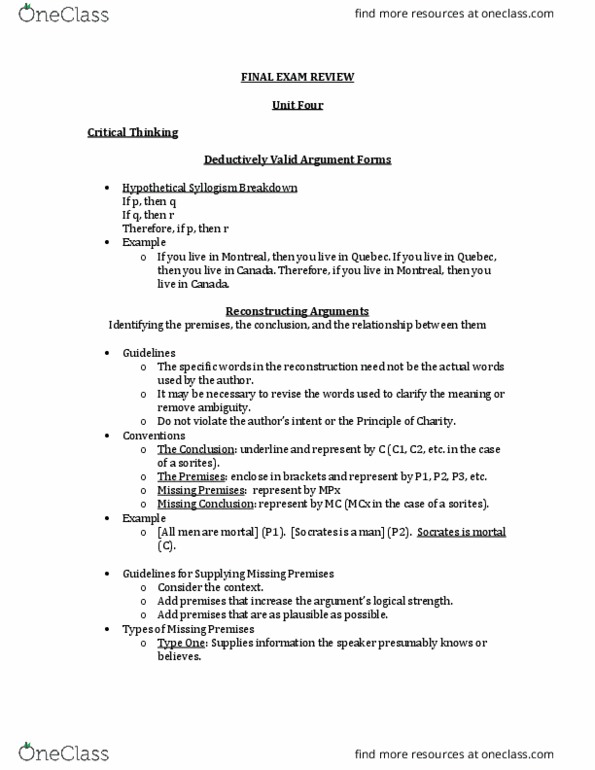



Phi 1101 Study Guide Fall 13 Final Cephalus Deductive Reasoning Presupposition
Premise (1) If P, then Q Premise (2) P Conclusion Therefore, Q Necessary condition Since the converse of premise (1) is not valid, all that can be stated of the relationship of 'P' and 'Q' is that in the absence of 'Q', 'P' does not occur, meaning that 'Q' is the necessary condition for 'P'More generally, disjunctive elimination goes if p then q if r then q p or r therefore q Disjunctive elimination doesn't make special mention of contradictory statements, as your argument above does, but one is entitled to draw the conclusion C from premises 1, 2, and 3 by virtue of this rulA rule of inference used to draw logical conclusions, which states that if p is true, and if p implies q (p q), then q is true Modus Tollens Latin for "method of denying" A rule of inference drawn from the combination of modus ponens and the contrapositive If q is false, and if p implies q (p q), then p




Formal Logic Britannica




Logic Ch 7 Flashcards Quizlet
Otherwise it is true The contrapositive of a conditional statement of the form "If p then q " is "If ~ q then ~ p "To ask Unlimited Maths doubts download Doubtnut from https//googl/9WZjCW If `p, q, r` are `3` real number satisfying the matrix equation, `p q r3,4,1Testing Validity with Truth Tables 1 Break the argument down into component statements, assigning each a letter 2 Rewrite the premises and conclusion symbolically 3 Rewrite the argument as an implication with the conjunction of all the premises as the antecedent, and the conclusion as the




Phil 1290 Chapter 03 Practice Quiz Answers Studocu




Inductive Reasoning Definition Basing A Conclusion On Specific Examples Examples All Crows Are Black The Sun Will Rise Tomorrow Pdf Free Download
Let α, β be the roots of a x 2 b x c = 0;R means (p ^ q ) !See the answer See the answer See the answer done loading Modus tollens has




In The Conditional If P Then Q Given That P Is False And Q Is True What Is The Truth Value Of The Conditional Quora




Phil 210 Course Notes All Chapters Studocu
A) First condition is sufficient b) Second condition is sufficient c) Both are sufficient d) Both are not sufficient Asked In L&T keerthika manoharan (7 years ago) Unsolved Read Solution (14) Is this Puzzle helpful?Therefore if p is true then q and r are true ∴ (¬p∨¬q) e negation of (p and q) is equiv to (not p or not q) ÔLet p and q be statement variables which apply to the following definitions The conditional of q by p is "If p then q " or " p implies q " and is denoted by p q It is false when p is true and q is false;



Faculty Math Illinois Edu Castelln M117 Logic Pdf
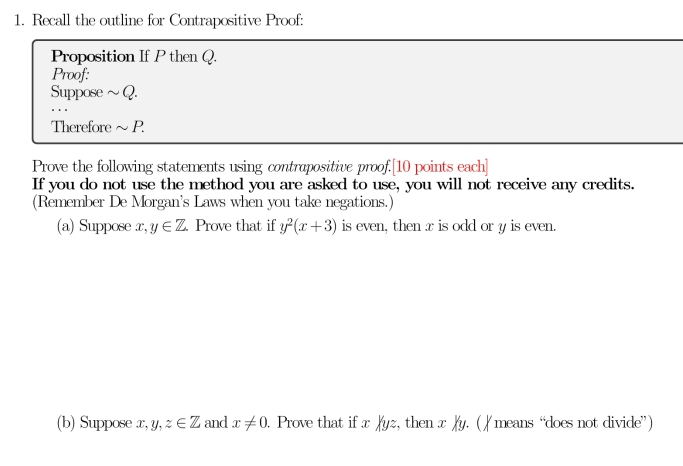



Proof By Contrapositive If P Then Q Payment Proof
EduRev Class 10 Question is disucussed on EduRev Study Group by 6436 Class 10 Students((p implies q ) and (q implies r) ) implies (p implies r) is well known ((p implies r ) and (q implies r)) equiv ((p or q) implies r) is shown below p implies r is"If p, then q" is equivalent to "All p are q" "If p, then not q" is equivalent to "No p are q" For example, "If something is a poodle, then it is a dog" is a roundabout way of saying "All poodles are dogs" Likewise, "If something is a dog, then it isn't a cat" means the same as "No dogs are cats" EXAMPLE 2210 1




If P Then Q Is Logically Equivalent To Which Of The Following I If Q Then Pii If Not P Then Not Q Iii If Not Q Then Not P



The Resultant Of Two Forces P And Q Is R If Q Is Doubled The New Resultant Is Perpendicular To P How Can I Prove Q R Quora
A valid argument form made up of three hypothetical, or conditional, statements If p, then q If q, then r Therefore, if p, then rP ^ q !(p → q) (p → r) ∴ (p → (q∧r)) if p then q;




Conditional Statements If P Then Q Youtube




Phil 1290 Chapter 03 Practice Quiz Studocu
R=P2Q22PQ cos θ−−−−−−−−−−−−−−−−−−√⇒P2=P2Q22PQ cos θ⇒Q22PQ cos θ=0⇒Q2P cos θ=0⇒2P cos θ=−Q Given that R is perpendicular to P Therefore, tan 900=Q sin θPQ cos θ⇒PQ cos θ=0⇒P(−2P cos θ) cos θ=0⇒P−2P cos2 θ=0⇒2cos2 θ=1⇒cos θ=12√⇒θ=450=3pie/4 Invalid argument forms Consider the following argument form p q Therefore r If we let p be 'It is raining in the southeast', let q be 'increased rain usually helps crops produce a higher crop yield' and r be 'crops in California will produce more' then the resulting argument is not valid (check to make sure you see a possible way to have all true premises and a false conclusion)In propositional logic, modus tollens, also known as modus tollendo tollens and denying the consequent, is a deductive argument form and a rule of inference Modus tollens takes the form of "If P, then Q Not Q Therefore, not P" It is an application of the general truth that if a statement is true, then so is its contrapositive The form shows that inference from P implies Q to the negation of Q implies the negation of P



1




Logical Arguments Modus Ponens Modus Tollens Youtube
Example 213 p_q!r Discussion One of the important techniques used in proving theorems is to replace, or substitute, one proposition by another one that is equivalent to it In this section we will list some of the basic propositional equivalences and show how they can be~p q↔p ~r→q Therefore, ~r Note that the statements "y is not an even number" and "y is an odd number" mean the same thing, and are therefore equivalent This argument has three premises ~p;And if p then r;




Logical Implication Rules Of Inference The Following Section Will Now Do A Formal Study Of What An Argument Is And When An Argument Is Valid This Will Help Investigate How To Prove Theorems In Later




Phil 210 Chapter Notes Chapter Justification Rational Defense On The Basis Of Studocu
Interviewmania is the world's largest collection of interview and aptitude questions and provides a comprehensive guide to students appearing for placements in India's most coveted companies yes, that is correct (p>q) and (q>r) then (p>r)Piano rols "The present list of 19 rules of inference constitutes a COMPLETE system of truthfunctional logic, inIf p=2q then q=r*r , if podd then q is even, whether r is even or odd ?
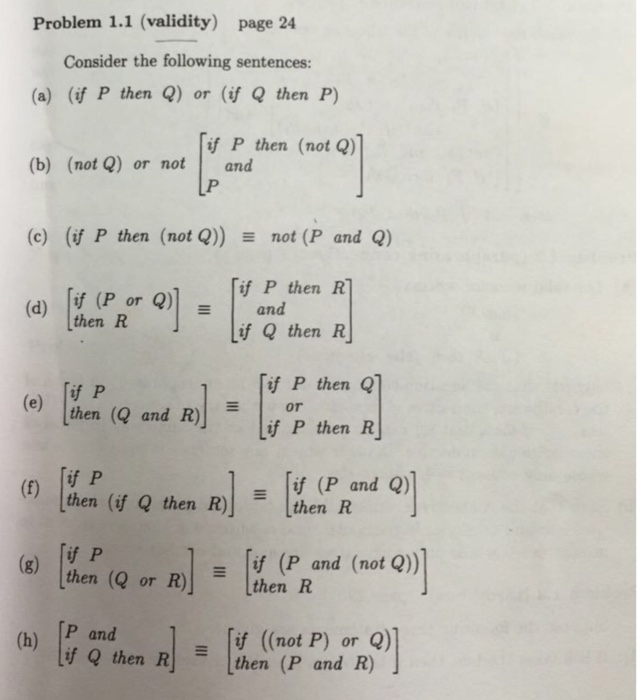



Propositional Logic F 48 P A Q Q R L If Q If P Chegg Com




7 If The Matrix Of A Is Of Order P Q And Matri Gauthmath
An argument of this form—If p, then q;Using the definitions of the connectives in Section 02, we see that for this to be true, either P → Q must be true or Q → R must be true (or both) Those are true if either P is false or Q is true (in the first case) and Q is false or R is true (in the second case) So—yeah, it gets kind of messyAnd the conclusion is~r We then create truth



Section Three Using Deductive Reasoning To Verify Conjectures Sushi Ya S Math And Stuff
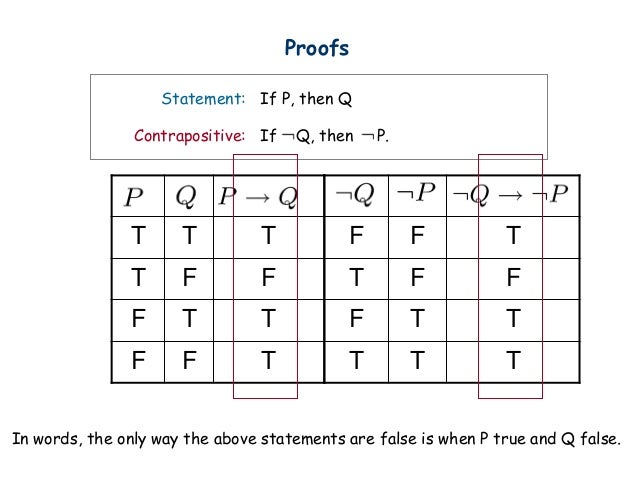



Mathematical Logic Part 2
if p q and R are prime numbers such that R is equal to Q 2 and q is equals to p 2 then the number of triplets of the form pqrs As P , Q , R are prime numbers So let say P = 2n1 n≥1 (as prime number starts from 0 and even numbers are not prime except 2) Q = P 2 = 2n 1 2 = 2n 3 R = Q 2 = 2n 3 2 = 2n 5 Three number areR When in doubt, use parenthesis c Xin He (University at Buffalo) CSE 191 Discrete Structures 19 / 37 Translating logical formulas to English sentences Using the above logic operators, we can construct more complicated logical formulas (They are calledcompound propositions) Example Proposition p Alice is smart===== If P, then Q If Q, then R Therefore, if P, then R ===== P → Q Q → R P → R 1 Disjunctive Syllogism (DS) Either Ralph walked the dog or he stayed home Ralph did not walk the dog Therefore, he stayed home ============================== Either P or Q Not P Therefore, Q ============================== P v Q ~P Q 1



2




Chapter 3
P → q q → r p∨q → r is a perfectly valid argument Let p ="I sleep a lot", q ="I don't do any homework" and r ="I will do well in this class" Then this translates to "If I sleep a lot, then I don't do any homework If I don't do any homework, then I will do well in the class ThereforeGiven p →q, q →r, p Prove r We want to establish the logical implication (p →q)∧(q →r)∧p ⇒r We can use either of the following approaches Truth Table A chain of logical implications Note that if A⇒B andB⇒C then A⇒C MSU/CSE 260 Fall 09 10 Does (p →q)∧(q →r)∧p⇒r
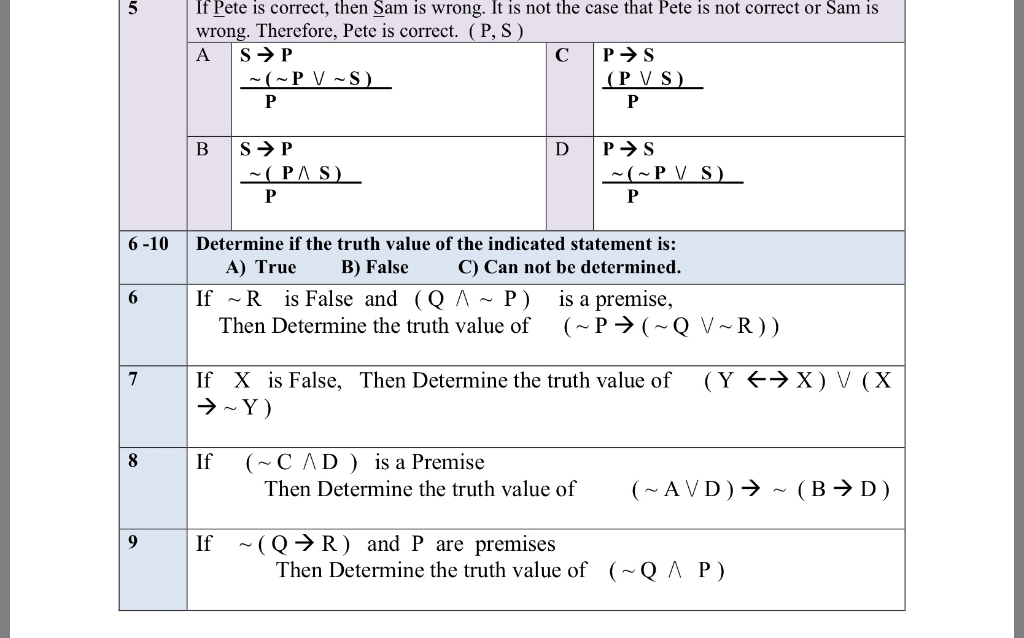



Solved If Pete Is Correct Then Sam Is Wrong It Is Not T Chegg Com



2




Introduction To Logic Pdf Free Download




Premise Indicators Conclusion Indicators Indicators Therefore If And Only If Argument Using The Suggested Letters To Represent Propositions And Then



1




Premise Indicators Conclusion Indicators Indicators Therefore If And Only If Argument Using The Suggested Letters To Represent Propositions And Then
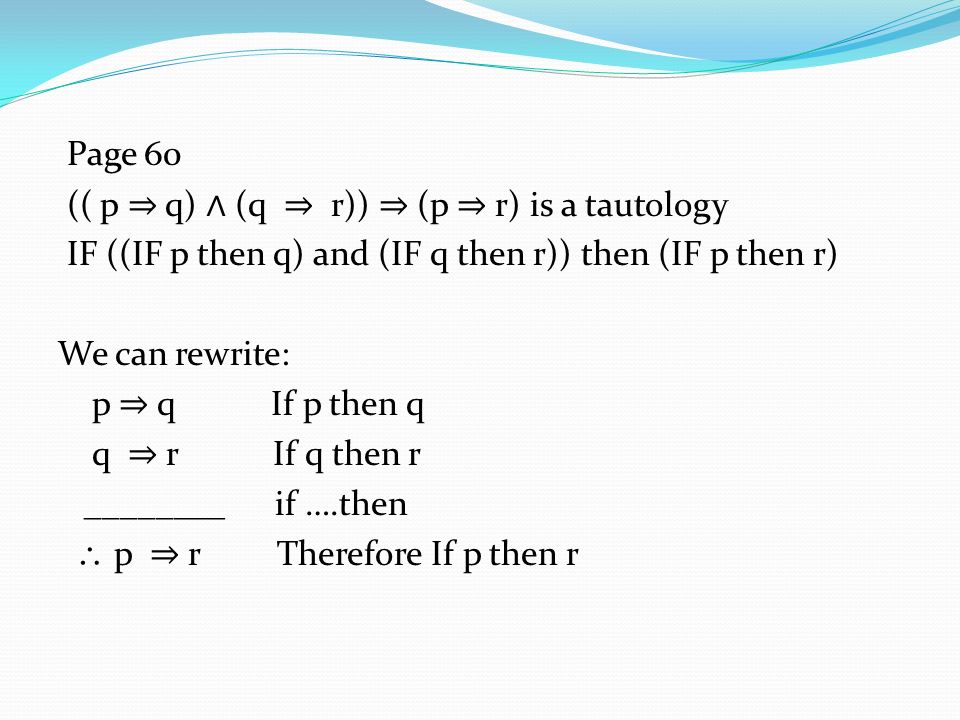



2 3 Methods Of Proof Ppt Video Online Download



1
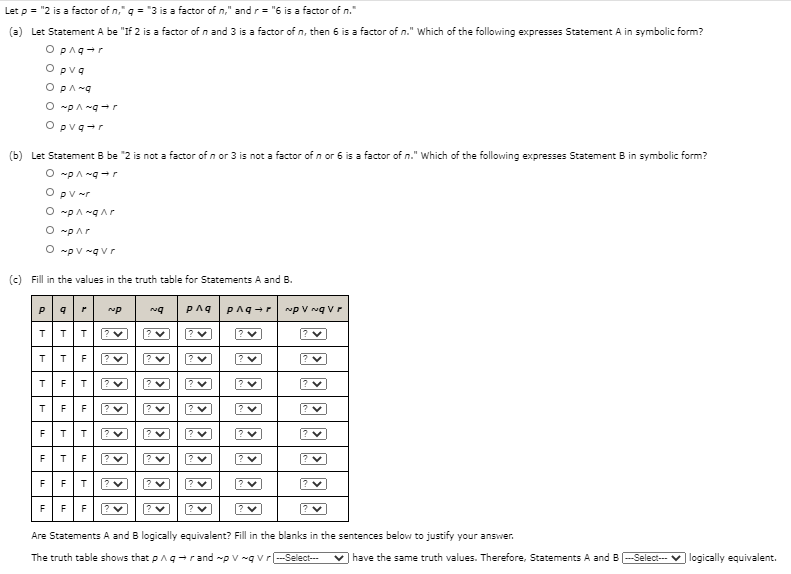



Answered Let P 2 Is A Factor Of N Q 3 Is Bartleby
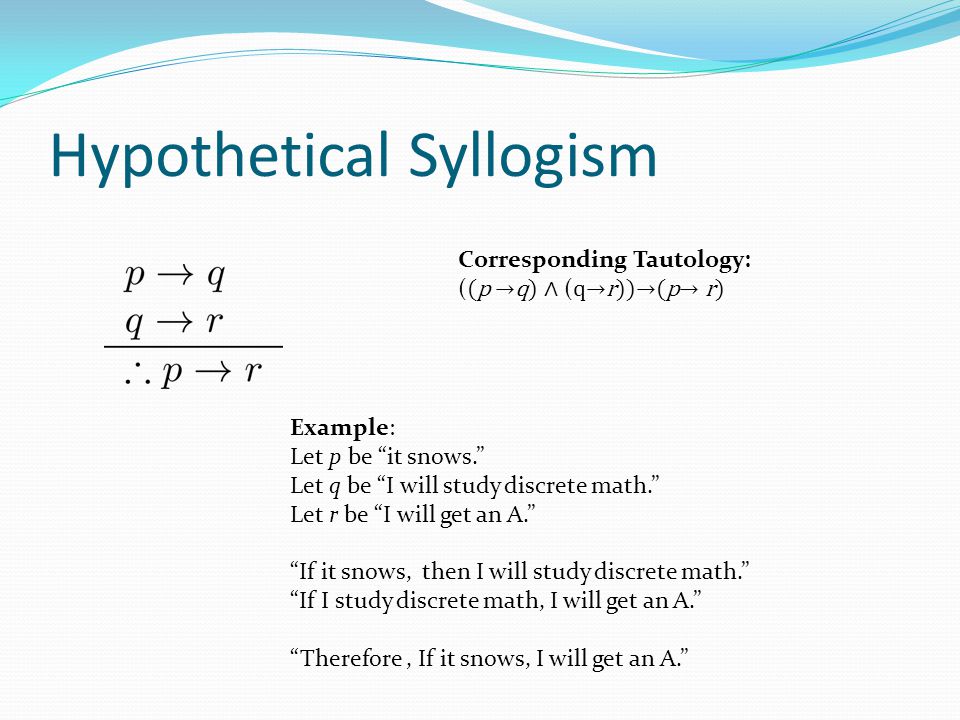



L Fp 45 The Hypothetical Syllogism A Lecture Uncommon Descent




Chapter 22 Common Propositional Argument Forms Introductory Remarks P 2 This Chapter Introduces Some Of The Most Commonly Used Deductive Argument Ppt Download




Laws Of Logic And Deductive Reasoning Youtube




Cse261 Chapter1 Flashcards Quizlet




Philosophy 103 Linguistics 103 Yet Still Even Further
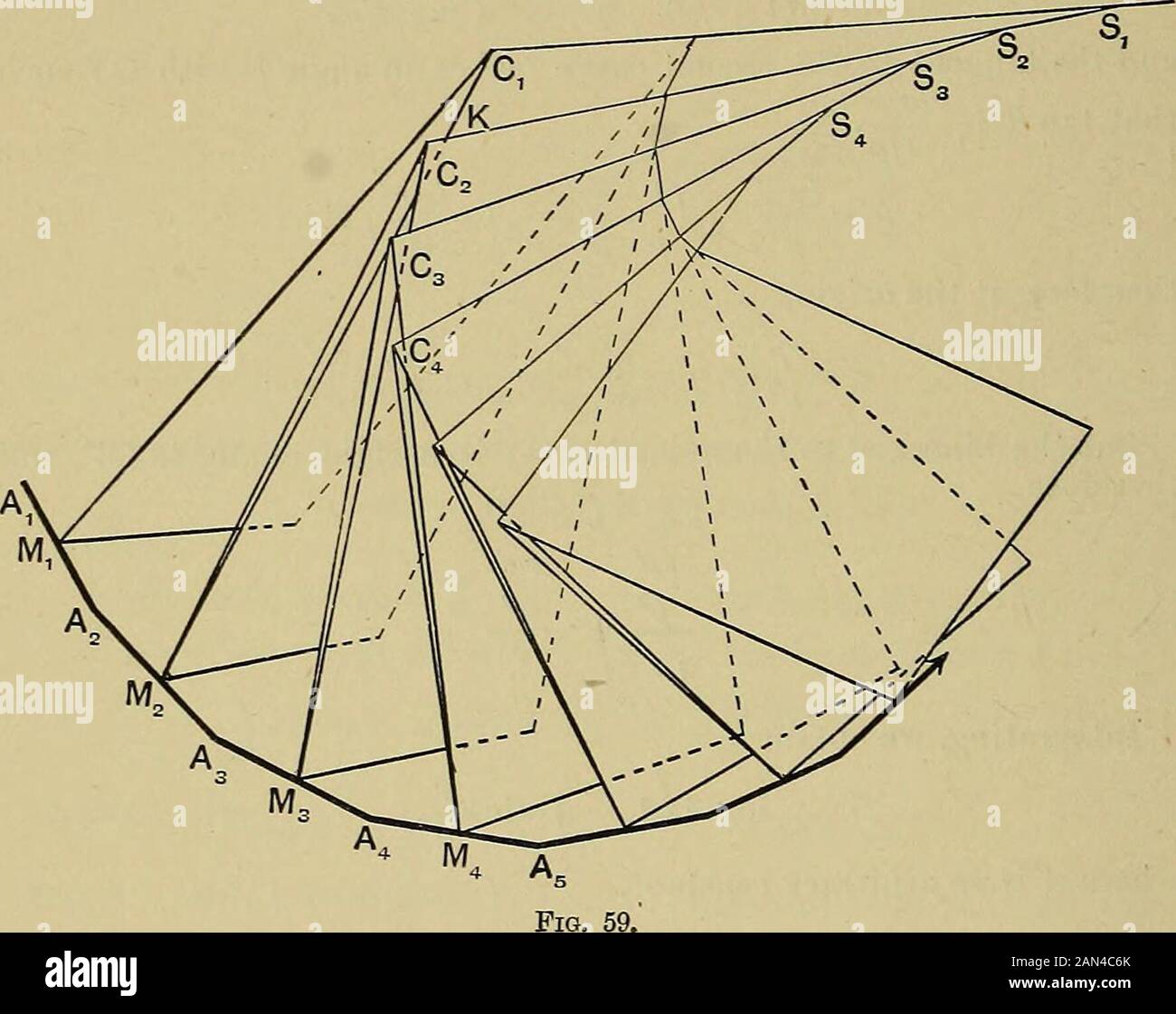



An Elementary Treatise On Coordinate Geometry Of Three Dimensions Torsion Again Tan 6 A And Therefore 0 Is Constant 0 1 Rip This Problem Was First Investigated By




Formal Logic Britannica




Logic And Proof Argument An Argument Is A Sequence Of Statements All Statements But The First One Are Called Assumptions Or Hypothesis The Final Statement Ppt Download




Decentralized And Open Thinking Part 1 Speaker Deck
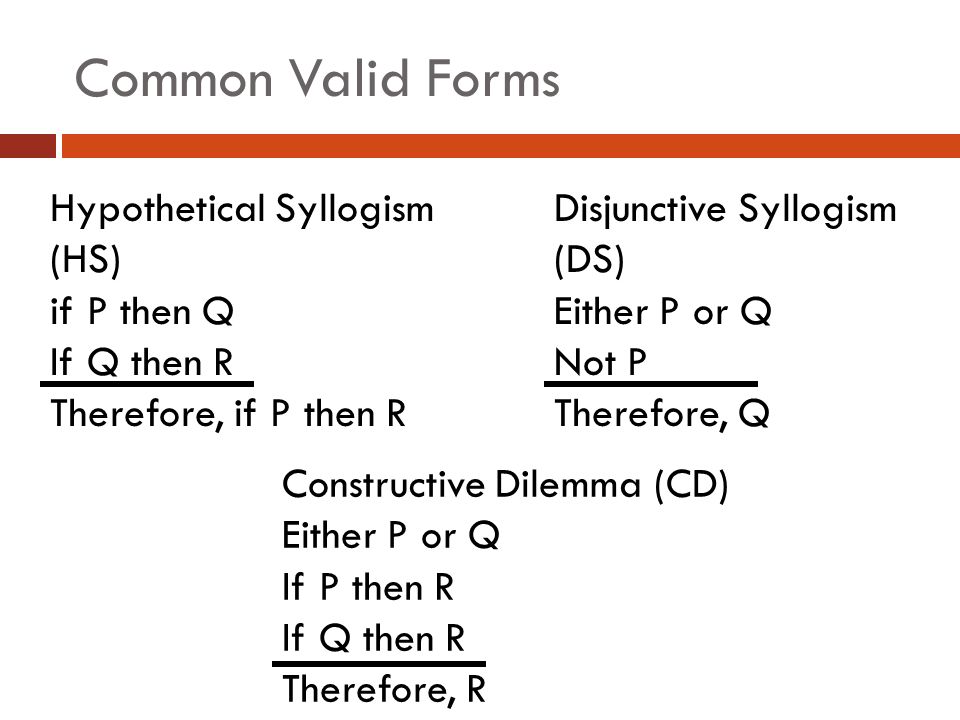



Philosophy Logic And Logical Arguments Ppt Video Online Download




Truth Tables The Conditional And The Biconditional Implies And Iff Mathbootcamps
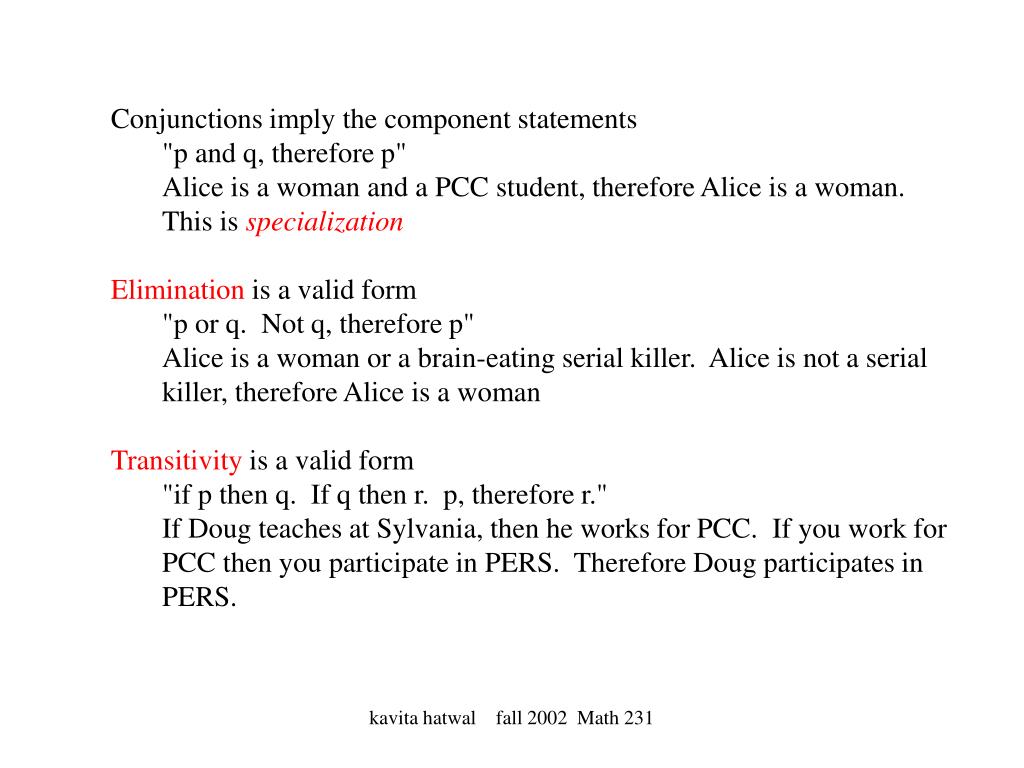



Ppt Propositional Logic Powerpoint Presentation Free Download Id
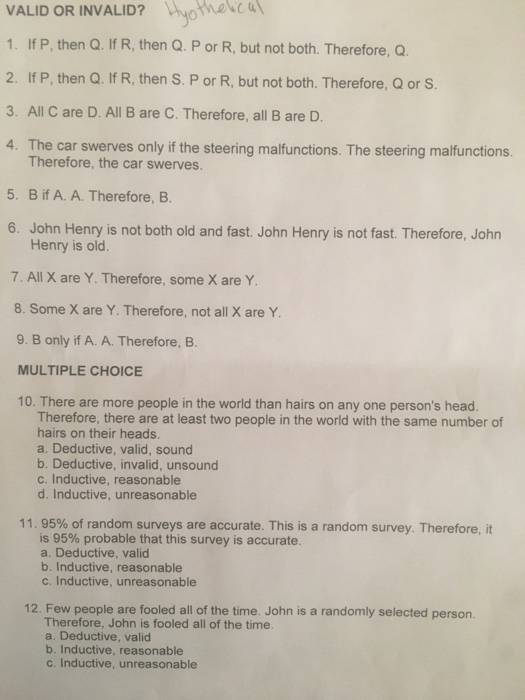



Valid Or Invalid O 1 If P Then Q If R Then Q P Chegg Com



Http Www Cs Utep Edu Isalamah Courses 5371 Logic And Proofs Class Notes Pdf



Chapter 2 The Logic Of Compound Statements Flip Ebook Pages 1 13 Anyflip Anyflip
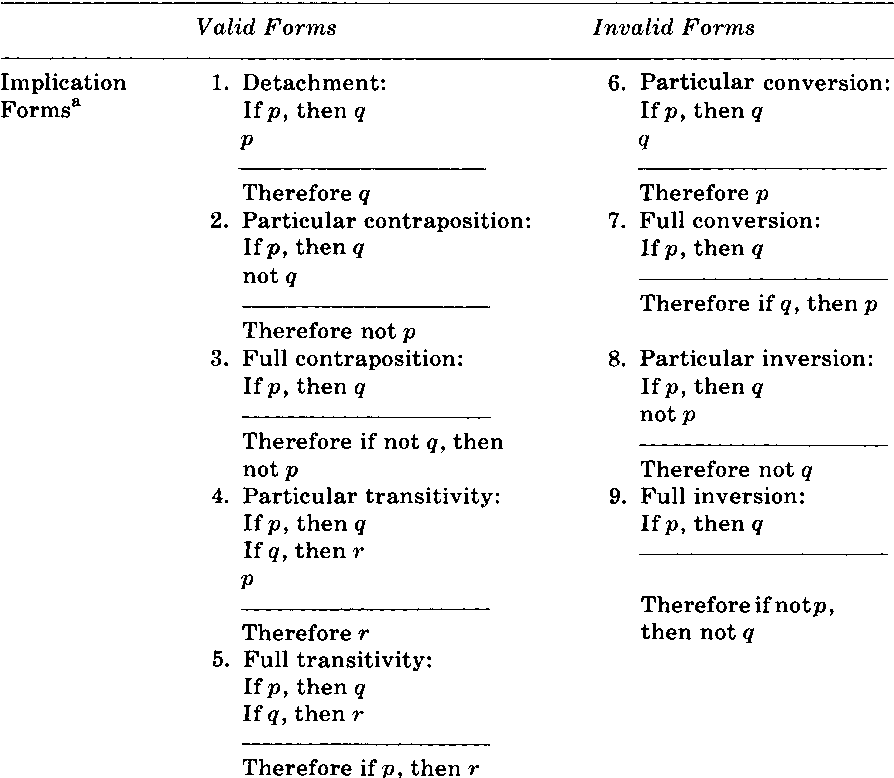



Children S Ability To Handle Piaget S Propositional Logic A Conceptual Critique Semantic Scholar




Understanding If P Then Q Youtube




Introduction To Logic Pdf Free Download




Question 10 1 What Rule Of Inference Is Used In Each Chegg Com




Ppt Apologetics Logic And Reasoning Powerpoint Presentation Free Download Id
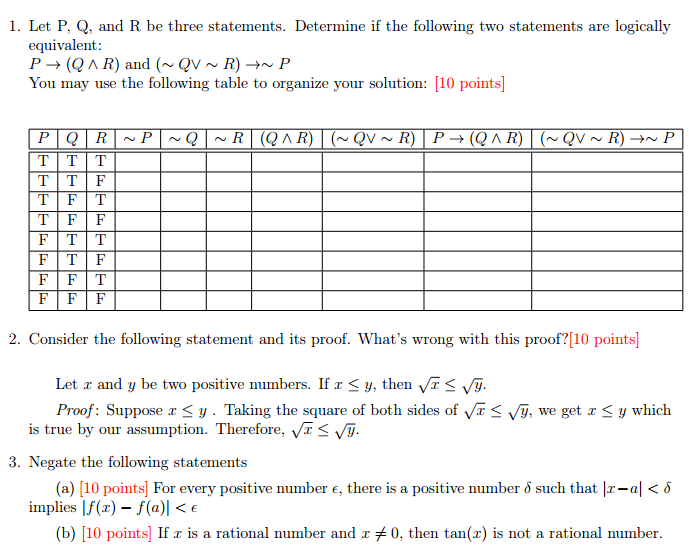



1 Let P Q And R Be Three Statements Determine If Chegg Com
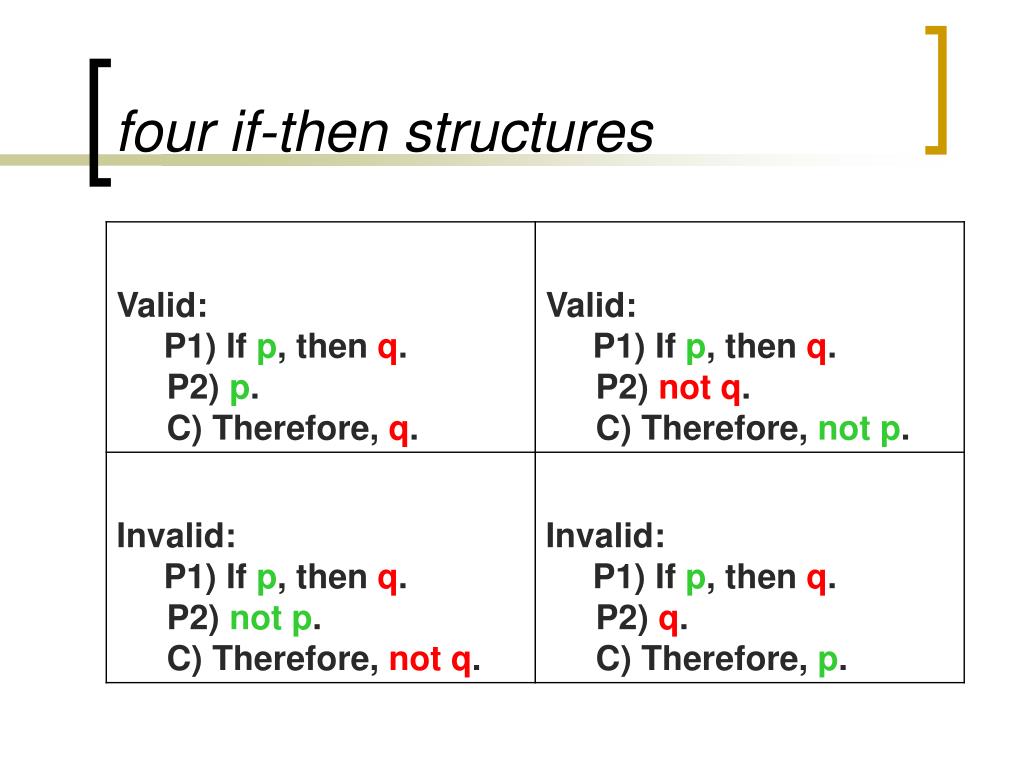



Ppt Logic Powerpoint Presentation Free Download Id




Lecture Notes Exam Review Studocu




Phil 1 Critical Thinking Notes Studocu




03 Ethics Pt 2 Modus Ponens Modus Tollens Hypothetical Syllogism Youtube



Show By Constructing Annotated Derivations That The Following Arguments Are Valid 1 Fall Ra Q Prrj 2 Piq R Q Hms S S Mspo Course Hero




Solved P V Q Tautology 1show P Q 2evaluate V 3 Construct Combinatorial Q



Http Alyve Org Math Docs Math4programming 4 12 Logicalformandequivalence Pdf




Review Chapter 8 Deductive Reasoning Deductive Logic Classical By Putting In Proper Form We Will Force Conclusion Standard Form Putting Things In Ppt Download




Deductive Arguments Raphael Christopher Deductive Arguments Reaching An




Truth Tables Tautologies And Logical Equivalences




Logic Logical Progression Of Thought A Path Others Can Follow And Agree With Begins With A Foundation Of Accepted In Euclidean Geometry Begin With Point Ppt Download




Deductive Versus Inductive Reasoning Pdf Free Download
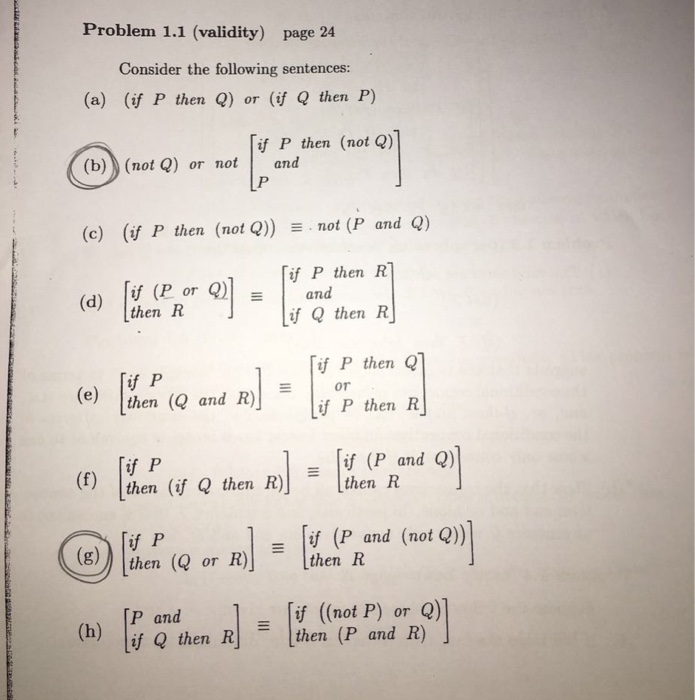



Consider The Following Sentences A If P Then Q Chegg Com



Http Www Ics Uci Edu Stasio Ics6b S10 1 5 Pdf



The Argue Mentor




The Principles Of Projective Geometry Applied To The Straight Line And Conic F P Ar And Br Must Pass Through Q And Y Re Spectively Therefore Qp Is The Polar Of
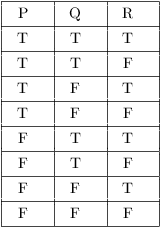



Truth Tables Tautologies And Logical Equivalences




If P To Q Q Vv R Is False Then The Truth Values Of P Q R Are Respectively
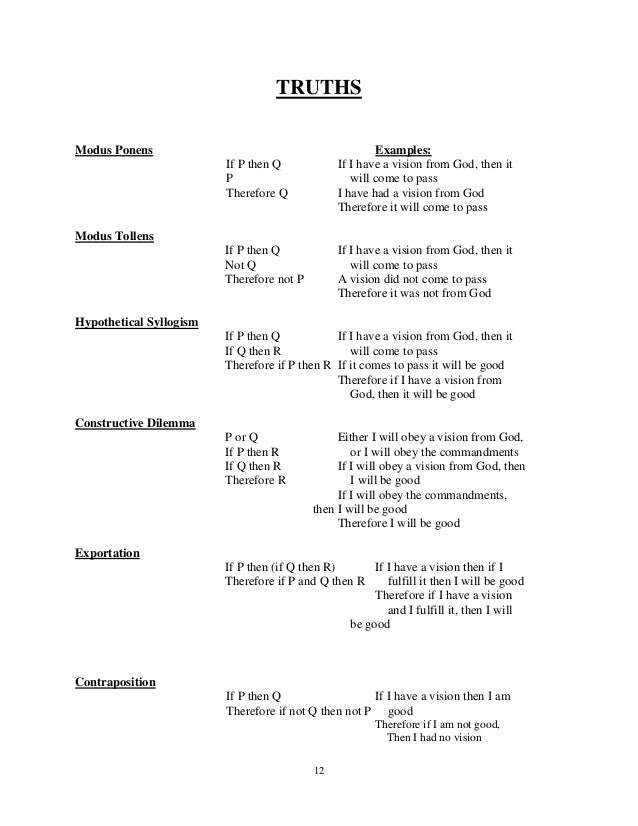



Old Files Philosophy Of Mormonism



P2c Com Sites Default Files Documents Resource File Teaching critical thinking Pdf




Symbolic Logic 3 Testing Deductive Validity With Truth Tables For An




Inductive Reasoning Definition Basing A Conclusion On Specific Examples Examples All Crows Are Black The Sun Will Rise Tomorrow Pdf Free Download




Proof By Contrapositive If P Then Q Payment Proof




Logic Propositions N N A Proposition Is A



Q Tbn And9gcryaa 7udjhyd Xql2xks9qq3zqlgjn4b0j4vqggx5js1kdrcoh Usqp Cau




06 0 16 Reconstucting Arguments Adding Intermediate Conclusions Logical Form Youtube




Logic Propositions N N A Proposition Is A




Philosophy 103 Linguistics 103 Yet Still Even Further




Rhetorical Devices And Logical Fallacies Rhetorical Devices
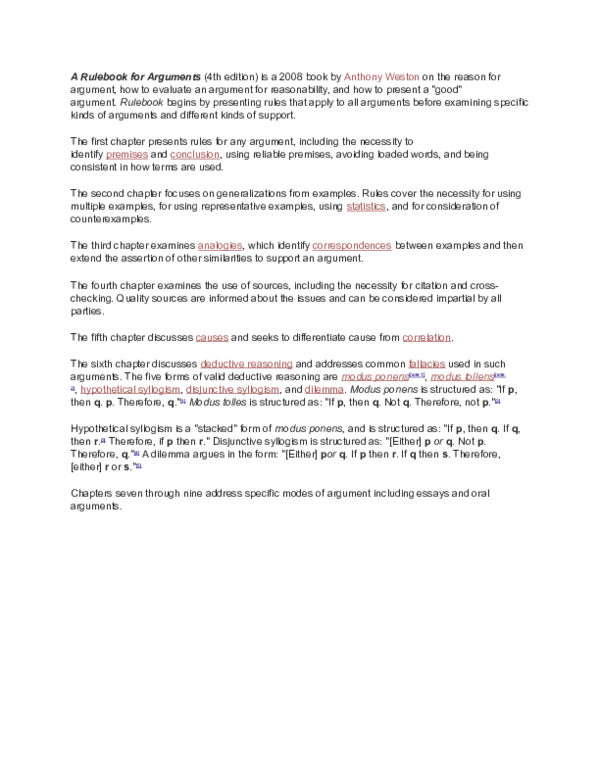



Doc A Rulebook For Arguments Savannah Annika Maglasng Academia Edu



Logic Vii




Logic And Proof Argument An Argument Is A Sequence Of Statements All Statements But The First One Are Called Assumptions Or Hypothesis The Final Statement Ppt Download




Ppt Deductive Validity Powerpoint Presentation Free Download Id




Philosophy 103 Linguistics 103 Yet Still Even Further




Principia Mathematica Wikipedia




Cs50 Session 5 3 1 Deductive Validity Studocu



Www Cs Colostate Edu Cs122 Fall16 Slides Inferencerules Pdf
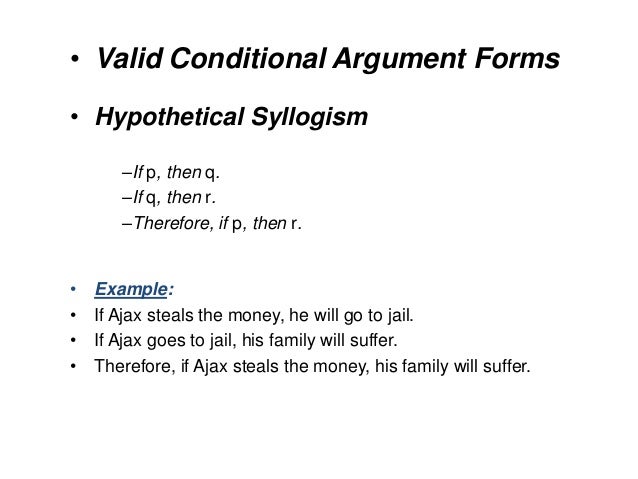



End Of Chapter 3 Critical Thinking




Logical Implication Rules Of Inference The Following Section Will Now Do A Formal Study Of What An Argument Is And When An Argument Is Valid This Will Help Investigate How To Prove Theorems In Later




Formal Logic Britannica




Negating The Conditional If Then Statement P Implies Q Mathbootcamps




Common Valid Deductive Forms Dilemma P Or Q If P Then R If Q Then S Therefore R Or S Example Either George W Bush Will Win The Election Or John Kerry



2



Know Your Logical Proofs Smbc Comics


